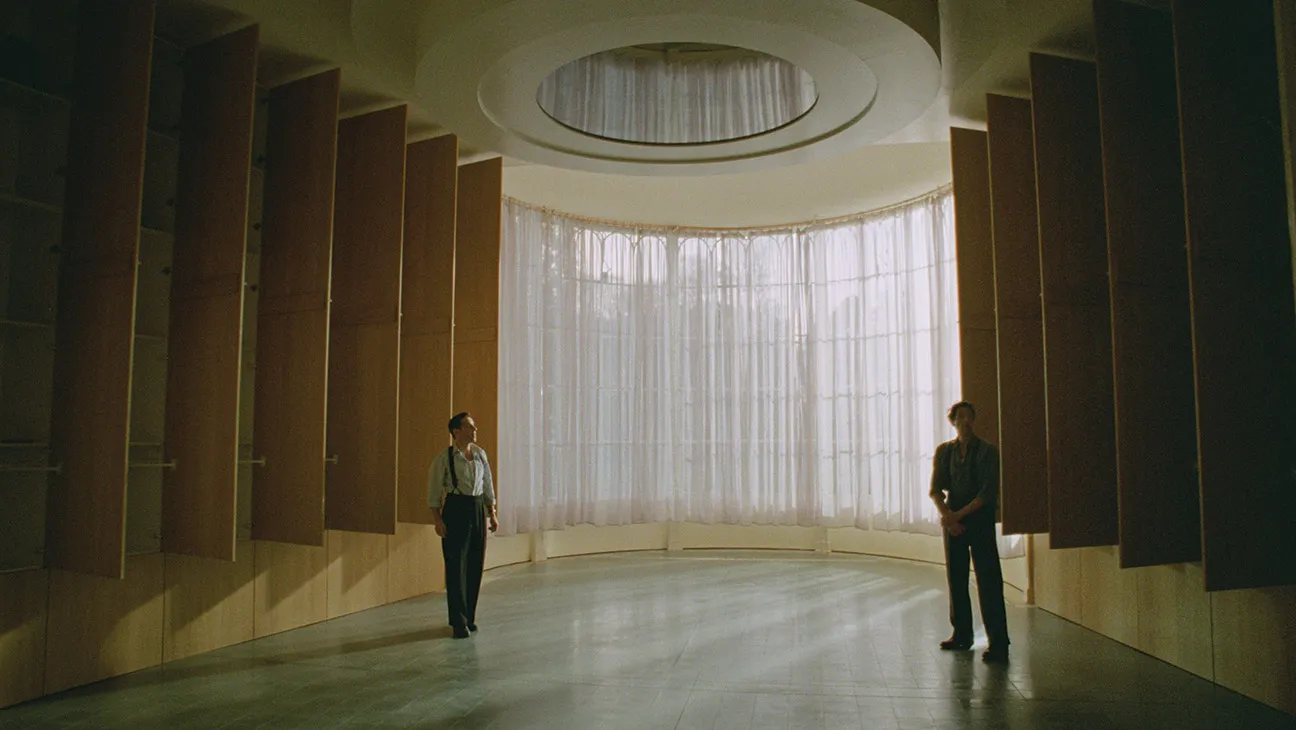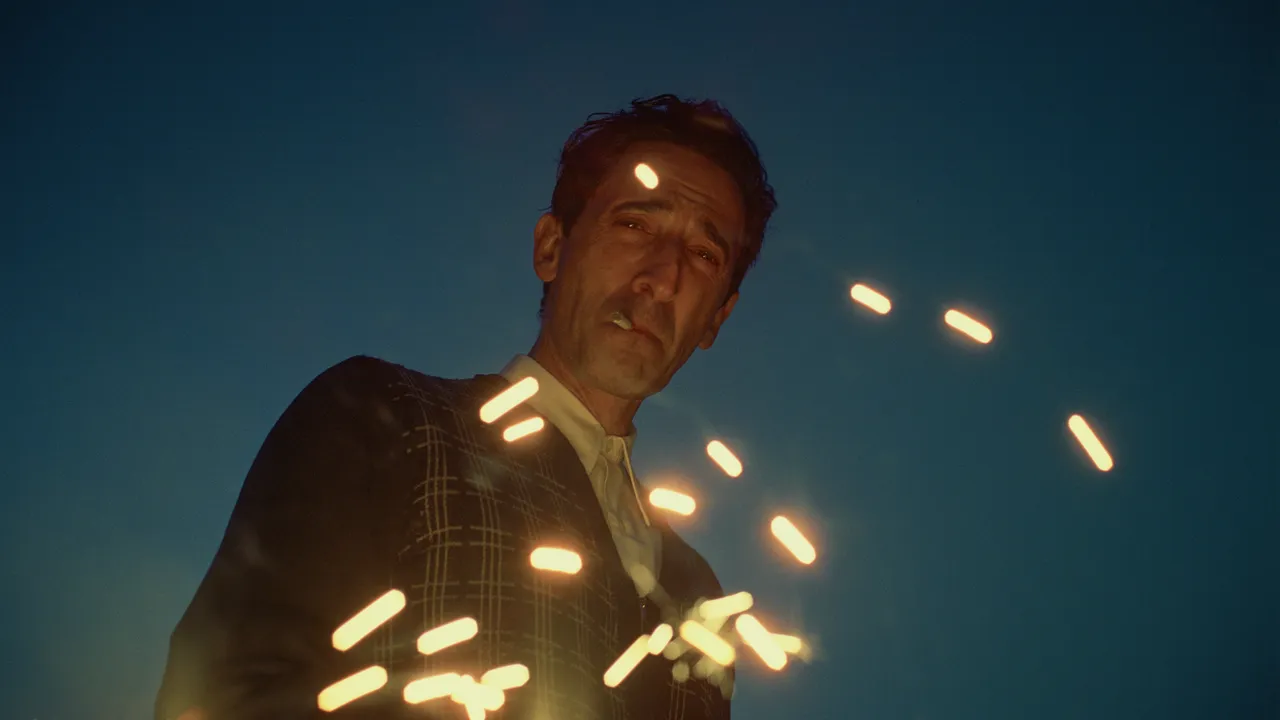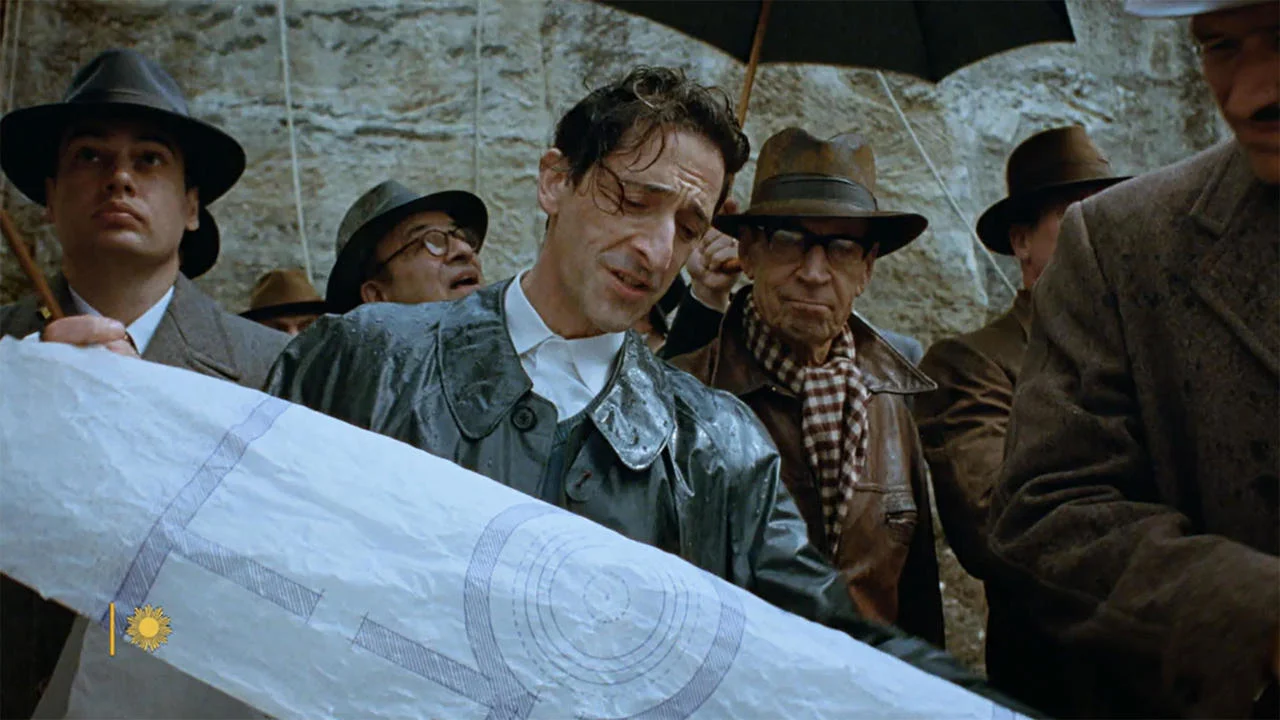Film Review: The Brutalist (2025)
- Alex Kelaru

- Feb 6
- 4 min read
Kelaru & Fulton rating: ★★★★★
Runtime: 3 hrs 34 mins
The Brutalist is truly an epic film in every sense of the word—epic in scale, theme, acting, direction, production values, and even in its very existence.
It’s also epic in what it sets out to achieve. Whether it fully succeeds is up for debate, but what’s undeniable is the ambition on display.
The central theme revolves around immigration and the sacrifices it demands. At its heart is Laszlo Toth (Adrien Brody), an architect fleeing a Nazi-bombed Budapest. His arrival in New York is marked by a moment of striking symbolism: emerging from the bowels of a ship, he’s blinded by the blue sky and sees the Statue of Liberty upside down—a haunting warning that the American dream might not be what it seems. This kind of subtext runs throughout the film’s impressive 3-hour, 34-minute runtime, as it explores themes of identity, power, corruption, humanity, and the sacrifices made for legacy.
Laszlo reconnects with his cousin Attila (Alessandro Nivola), a man living the so-called American dream—but not without regrets. Attila has worked hard, rebranded his furniture company as Harris & Sons (despite neither being named Harris nor having sons), and married Audrey (Emma Laird), a young, all-American wife. Yet his efforts haven’t delivered the fulfilment he imagined, and his identity crisis is palpable. Jealous of Laszlo’s clarity of purpose—building structures with single-minded focus—Attila sees in his cousin the confidence and drive he himself lacks.
The two are hired by Harry (Joe Alwyn), the privileged son of a wealthy industrialist, to secretly redesign his father’s library. Laszlo’s brutalist style—rooted in post-war hope and simplicity—captures the essence of the era, a time when rebuilding after destruction demanded both functionality and artistry. His work is lauded, but Harrison Sr. (Guy Pearce) returns early, furious at the modern changes, and abruptly cancels their contract. In an explosive rant, Harrison reveals his true colours in a blink-and-you’ll-miss-it moment, uttering a racist remark about his ailing mother having to be confronted by a 'negro' when returning home.
Now jobless and unpaid, Laszlo moves to New York to work in construction, saving money to reunite with his wife and niece which he plans to bring to the US. Yet Harrison re-enters the picture, drawn to Laszlo’s talent after his library design gains attention in architectural magazines. Harrison offers Laszlo a new opportunity to create something grand—a project that will define modernist architecture in America.
The relationship between Laszlo and Harrison becomes the film’s centrepiece, exploring the dynamic between artist and patron. The monumental project they undertake comes at a great cost, particularly for Laszlo. Undermined at every turn by Harrison and tormented by the absence of his wife, Laszlo spirals into drug use to cope with the immense pressure. Despite his talent, his creative nature cannot shield him from the emotional toll. When his wife, Erszebet (Felicity Jones), finally arrives—frail and wheelchair-bound due to extreme malnutrition—it provides a glimmer of hope, though the sacrifices made along the way remain immense.
This theme of sacrificing the creator for the creation is explored with nuance, echoing biblical references to the Tower of Babel and Henrik Ibsen’s The Master Builder. Laszlo’s relentless pursuit of artistic greatness consumes him, mirroring the sacrifices of humanity in pursuit of impossible ambitions.
Harrison, meanwhile, becomes one of cinema’s most chilling villains. Played with quiet menace by Guy Pearce, Harrison is a character reminiscent of Daniel Plainview in There Will Be Blood or Oswald Cobblepot in The Penguin series. Yet Harrison operates without flamboyance, hiding behind a benefactor’s facade while manipulating and exploiting Laszlo. His machinations remain largely off-screen, but their consequences are devastating, crushing Laszlo’s spirit and faith in the American dream. One memorable scene reveals Harrison’s true nature, but I’ll avoid spoilers here.
Erszebet, played brilliantly by Felicity Jones, serves as the film’s emotional anchor. Her trauma and sacrifices give her an almost mystical ability to see through people, recognising both her husband’s pain and Harrison’s malevolence.
The acting across the board is exceptional. Adrien Brody is outstanding in the lead role, but Felicity Jones and Guy Pearce are strong contenders for scene-stealers. All three are nominated for Oscars, an achievement in itself. While I’m not entirely convinced Brody deserves his second win, Brady Corbet absolutely deserves recognition for his direction.
Corbet’s achievement here is nothing short of miraculous. The film was shot on VistaVision, an expensive and rare 35mm format requiring meticulous handling and planning. Filming lasted just seven weeks across Hungary and Italy, with minimal CGI and heavy reliance on practical effects. The $9.6 million budget covered a runtime of 3 hours and 35 minutes, including an intermission, and even with limited resources, Corbet delivers a film that feels grander than most blockbusters.
Despite its length, the film never feels tedious and it reminded me of epics like The Godfather Part II or Once Upon a Time in America. Corbet navigates the immigrant theme with patience and precision, scrutinising what the American dream represents—or whether it ever truly existed. His bold exploration of these themes makes The Brutalist a modern-day epic that feels timeless.
%20Logo%20Black%20over%20White.png)













